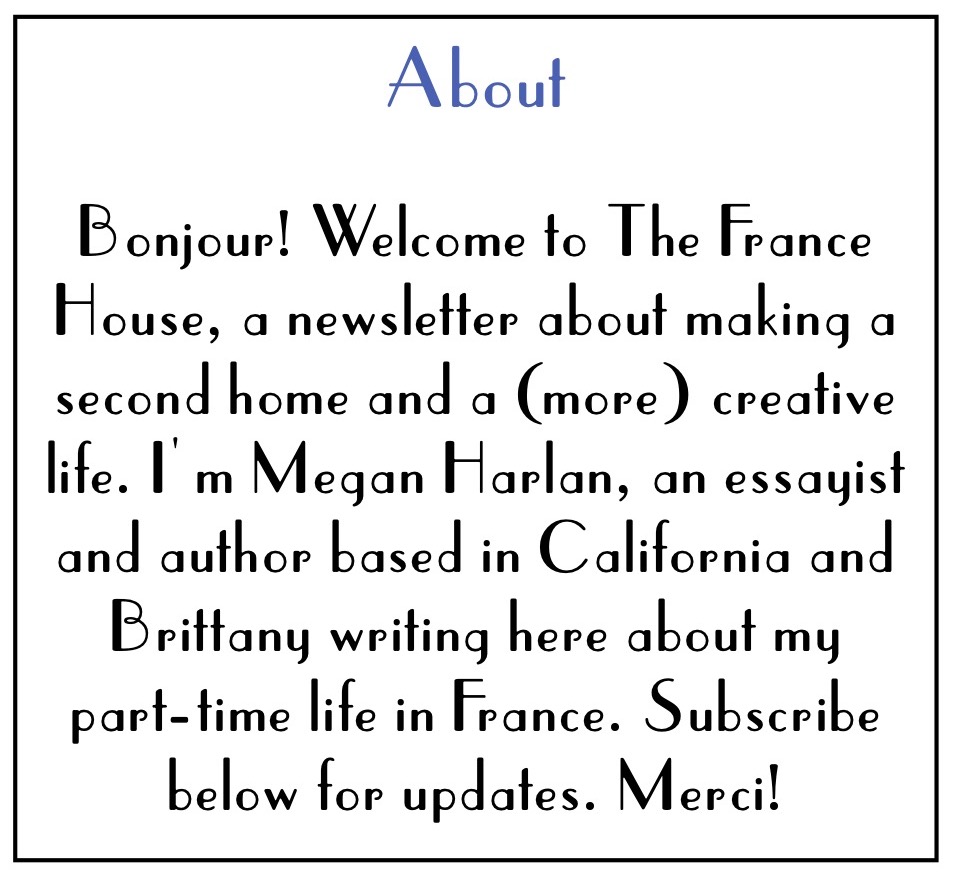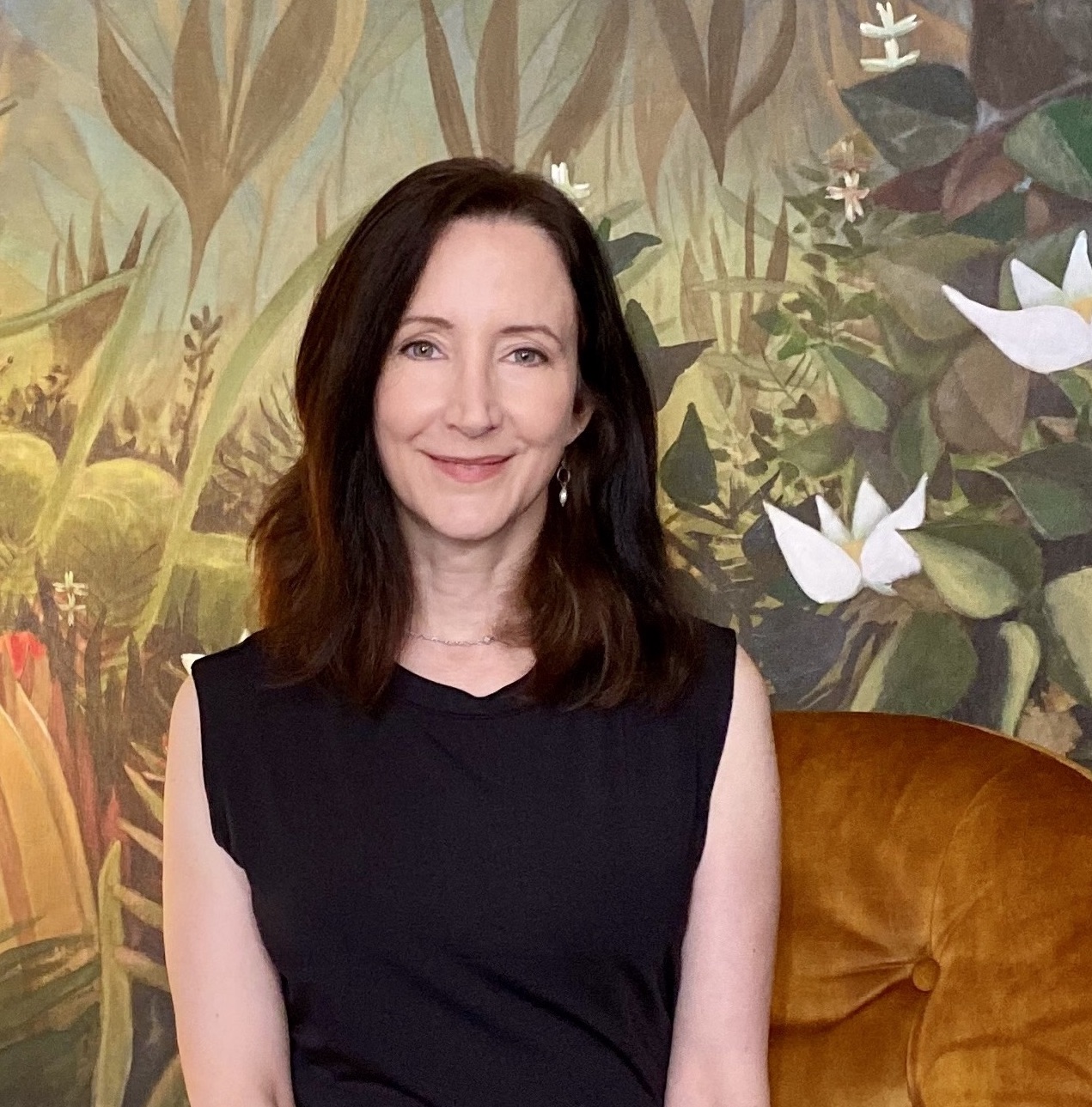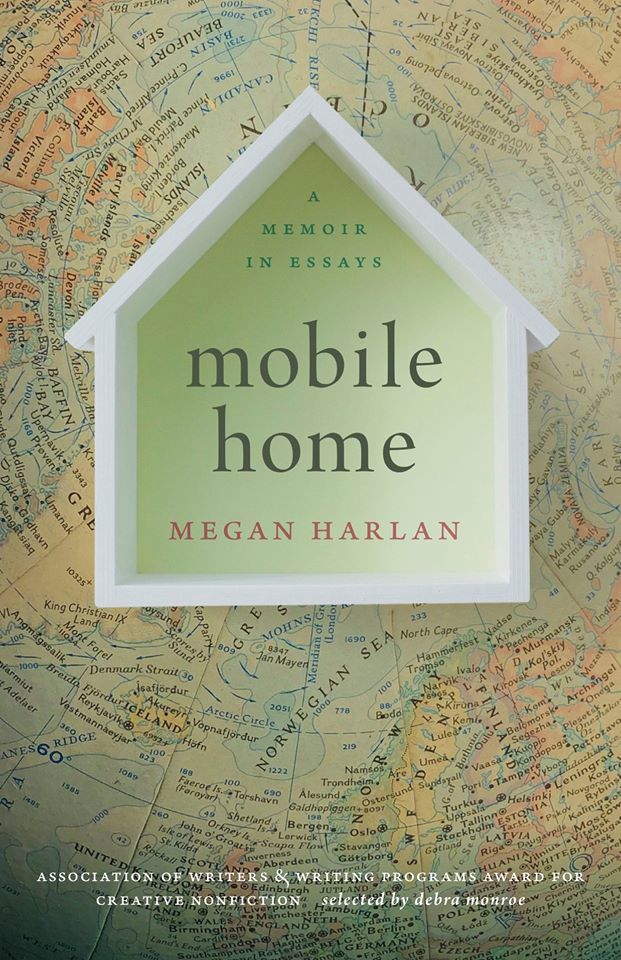On dreaming with a destination in mind.
By Megan Harlan
In July 2020—nadir of the Summer That Quarantine Ate—I was standing in my kitchen in California when I answered the phone call coming from France. It was Tracy Harris, the property agent in Brittany with whom I’d been emailing, now asking if I was serious about making a verbal offer on the house. “If so,” she said, “I’ll inform the agency, and we’ll stop showing it immediately.” Two sets of potential buyers were scheduled to view it that weekend. She explained that we’d have time to learn everything about the house before making a written offer; until then, we could pull out of the purchase if anything worrying came up. But because of the travel ban, it would of course be impossible for me to view the house in person.
For years, my partner and I had discussed buying a house in Europe, and most probably France—our own dream setting for a distant, part-time semi-retirement, a second home in the meantime. In the previous few months, stuck in lock-down like everyone else, I’d spent far too much time online being inundated by the Daily News Traumas. Frustrated and mentally worn-out, I’d started to replace what felt like a hopeless addiction with a purely enjoyable one: viewing online French house listings as a form of harmless escapism. Better to ogle Perigord or Gascon country homes, playing one dreamy game of “what-if?” after another, than to imbibe yet more anxiety-raising, horrible, or concerning events propagated by all the news outlets and then lit, over on social media, on toxic chemical fire.
After the dozens—okay probably hundreds—of houses I viewed, one finally stopped my search. It was located in what is arguably Brittany’s most beautiful town, Dinan, its walled medieval core set on a hill overlooking a storybook river port, a place officially designated a “City of Art and History” by the French government, and one my family and I had fallen in love with during a stay the previous summer. I’ll describe the house in detail in future pieces, but its layout far surpassed my hopes for a pied-à-terre: It had three bedrooms, two bathrooms, and just shy of 1,900 square feet divided over three stories.

Dinan and its 13th century wall
But my fascination went far beyond stats: At that moment, I poured over the dozen or so interior photos like maps to a long-lost, mythical home. Had I somehow been there before? The listing described the house as “atypique”—atypical, which may sound like a bad thing to Americans, but in France signals that it’s a “character home.” It looked to be built circa Jane Austen—exactly my kind of character, house-wise. The rooms struck me as both lovely and quirky, stunning and down-to-earth, livable and somewhat mysterious. Not a Norman castle nor a manor house with woodland by the hectares—whatever those were—this townhouse was very much within our budget. And it possessed a feature I didn’t know I wanted until I saw it: a salon with a ravishingly pretty painted ceiling.
Over the next couple of weeks, these rooms and that ceiling followed me around in my everyday California life: visiting me in the shower, appearing before my eyes while I made dinner or took, with my family, dreary masked walks around our Bay Area neighborhood, where everyone had to act like other humans were radioactive. Whatever any of us love about being out in the world—movement, improvisation, cafés, travel, serendipity, just chatting with someone about their cute dog—had been halted. But “the France house,” as I’d already silently dubbed it, kept wandering back into my mind like an icon. It could be a brilliant destination and home for my family in a—hopefully—not-so-distant future.
I’ll admit that a dream house has shaped and reshaped in my mind for my entire adult life. It’s less a particular building than a constellation of attributes that inform the dream: light-filled and lived-in, friendly to culture and the arts, casting wide, deep, thoughtful views onto each. Since I am no minimalist, I prefer things to look at least a touch overdone, very colorful, textured and studded with the unexpected, rooms with too many books and no place to put them, a just stack them on the windowsill, it’s fine sort of place. No finer aesthetic exists for me than the collected spines of books, gathered purely for my own whims, the covers’ random mix of colors and designs a variegated, do-it-yourself collage. Coco Chanel wisely advised chic people to take off one accessory or piece of jewelry before leaving the house; not being the height of French chic, I prefer to add one. Seen in the positive, ornamentation is the material world incorporated into our lives with personal aesthetic, meaning, and proportion. It provides solid bits of delight amid the very opposite—all the chaos, all the crap—inevitably coming at us.

the salon at dusk
I grew up living in seventeen different homes across four continents—everywhere from vast view houses to double-wide trailers, London to Saudi Arabia—which I wrote about in my memoir in essays, Mobile Home. As an adult, when I had my son, my partner and I bought our first house in the San Francisco Bay Area to raise him. It’s a nice place; it’s served really all of our purposes; we’re fortunate to continue to live well there. But the dream house floated elsewhere—somewhere beyond daily utility, an oasis and getaway for reading, writing, lounging, daydreaming about projects and interests, chatting over the music. Somewhere that would be, very specifically, in Europe, in one of a handful of favorite countries. This place was never a mansion, but rather my own highly particular values and desires and loves and senses of place and proportion, culture and history manifested in a home. A tall order, such a place is indeed a luxury—though not, it turns out in my case, one requiring vast sums of money.
Out on another masked walk, a vision of my long-time dream house came to mind. But now it looked like the France house: the tall ceilings and windows; some walls built of exposed cream-colored stone; a towering wooden spiral staircase; slant-roofed, top-floor white bedrooms that seem like ship cabins floating in the sky. Though I had many more reasons for buying this house, that moment of vision and intuition was the deciding factor for me to press on.

one spot for reading
Back at home, I emailed the agency to find out the street address—and to see what the house even looked like from the outside. One quirk of French real estate agency websites is that they don’t list the properties’ addresses, and often hide distinguishing exterior photos if the location is in a famous town or city. When I heard back from an agent, the location was, as I’d hoped, within the medieval, cobble-stoned center. I dropped my blue Google Maps gal onto the block and was relieved to view the house’s gracious stone exterior, slate roof, and classic features of Breton houses built during the Enlightenment. Then I “walked” up and down the residential street: the townhouse was close enough to life and cafés and restaurants on the surrounding blocks, but not within earshot of late-night joie de vivre. For my family, this seemed the ideal location.
Numbers immediately began flooding my brain. But even more than USD-EUR exchange rates or down payment deposit amounts, the numbers involved time. My kid was 13; he’d be away at college in five years. I wanted to offer him a larger sense of his place in the world while I could, this European home he’d experience during his growing-up years. If not now, when?
I talked to my partner, who was—somewhat incredibly—all in. And that was how I told the agent: Yes, I was serious. Thus I made the verbal offer to buy the France house, knowing full well I couldn’t first step foot in it.

[All photos credited to the author.]









